Our daily flatbread
Akki otti, a rice flatbread, is a staple at breakfast. My grandmother made these the traditional way, patting out the dough in circular movements on a dampened piece of muslin placed on a round wooden rolling board. These days, there are food processors and roti presses that make short work of the process of kneading and pressing out. There is nothing more evocative of an early morning in a Coorg household than the smell of freshly made akki ottis being given a final quick roasting on glowing embers.
Akki Otti
- 3 cups soft, cooked rice (freshly cooked is best but leftover rice is fine too)
- 1 cup rice flour
- Salt to taste
- Rice flour for dusting
Combine the ingredients and knead to a smooth dough, adding no water if possible. Too much water or flour in the kneading process will make the ottis hard.
Roll or press out balls of dough into 7-8″ rounds. Heat a heavy griddle and cook the the ottis on medium high for two minutes on one side before flipping. Cook for another two minutes, pressing the edges to seal any cracks that might appear. Flip once again, and using a spatula or clean cloth , press down gently and evenly over the surface to encourage puffing. This can also be done by holding the otti over a direct flame. Eat right away, or stack in a cloth lined dish until all the ottis are ready.
Makes approx. 10 ottis.
The standard accompaniment for akki ottis is a spicy chutney, or most often a pumpkin curry.
First you get your pumpkins.
Kumbala for a curry
This curry is made with a variety of pumpkin with sweet, dense flesh. Butternut squash makes a good substitute, while kabocha squash, though a little harder to prep, works even better.
Kumbala Curry
- 1 kg pumpkin, diced in 1″-2″ cubes (peeling is optional and I prefer to leave the skins on)
- 2 large onions, finely sliced
- 5-6 cloves garlic, lightly crushed
- 3-4 green chillies, slit
- 1 sprig curry leaves
- 1 tsp black or brown mustard seed
- 1/2 tsp turmeric
- 1/2 tsp chilli powder
- 1 tbsp ground coriander
- 1 tsp ground cumin
- Salt to taste
- 1 tbsp dark jaggery, or to taste
- A few sprigs of fresh coriander, finely chopped (optional)
- 2-3 tbsp oil
Heat the oil in a deep pan, kadhai or wok and sputter the mustard. Then add the curry leaves and garlic. Saute until the garlic begins to change colour. Then add the onions and green chillies and fry until the onions soften and begin to brown
Mix the remaining spices with the pumpkin and add to the pot. Stir to mix and add 2 or three cups of hot water and salt. Bring to a boil, then simmer on low until the pumpkin is tender. Stir in the jaggery. Just before removing from the heat, mix in the chopped coriander.
A popular way to eat akki otti and kumbala curry is to tear up the flatbread into a little mound of bite sized pieces and then ladle on the curry , very like a dish of pasta and sauce, only eaten with your hands! A dollop of fresh butter or ghee tops this off nicely.
Nutty, spicy, chutney
Another popular accompaniment for akki ottis at breakfast is ellu pajji, a nutty, spicy chutney, full of the goodness of sesame. Vary the proportion of sesame to coconut to suit your taste.
Ellu Pajji
- ½ cup (75 gms) brown unhulled sesame
- ½ cup grated coconut
- 2-3 small shallots or sambar onions, roasted *
- 3-4 green chillies, deseeded
- 1 tbsp thick tamarind extract
- 1 tbsp jaggery, or to taste
- Salt to taste
Dry roast the sesame on medium heat until it sputters.
Grind all the ingredients together to a smooth paste.
If you are using a food processor, powder the sesame before adding the other ingredients. You may need to add some water to help in grinding the paste. Use as little as possible.
A tempering of sputtered mustard, curry leaves and broken red chillies is optional.
Best eaten with akki ottis or dosas.
* This can be done over an open flame, or on a cast iron pan.

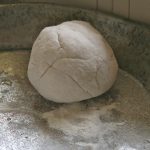


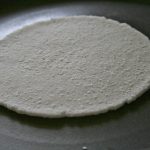
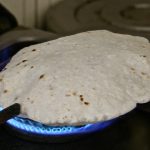
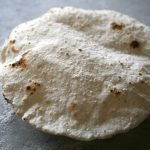
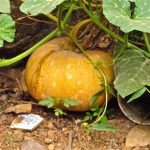
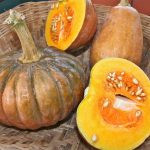
Quick! Put in ground coconut into Kumbla Curry recipe..
Hello V&A!
Don’t panic, this is one of a few variations on a basic kumbala curry, with and without coconut. While ground coconut is a standard addition in a lot of curries, cooked pumpkin tends to thicken the sauce naturally, so you can dispense with the coconut here unless you really can’t do without the flavour it adds. Welcome to A Cookery Year in Coorg 🙂
Very helpful to see the step by step photos – I’ve never had the whatchamacalit to make these. Might do now, since I am a big fan of braised pumpkin dishes anyway.
Please do!